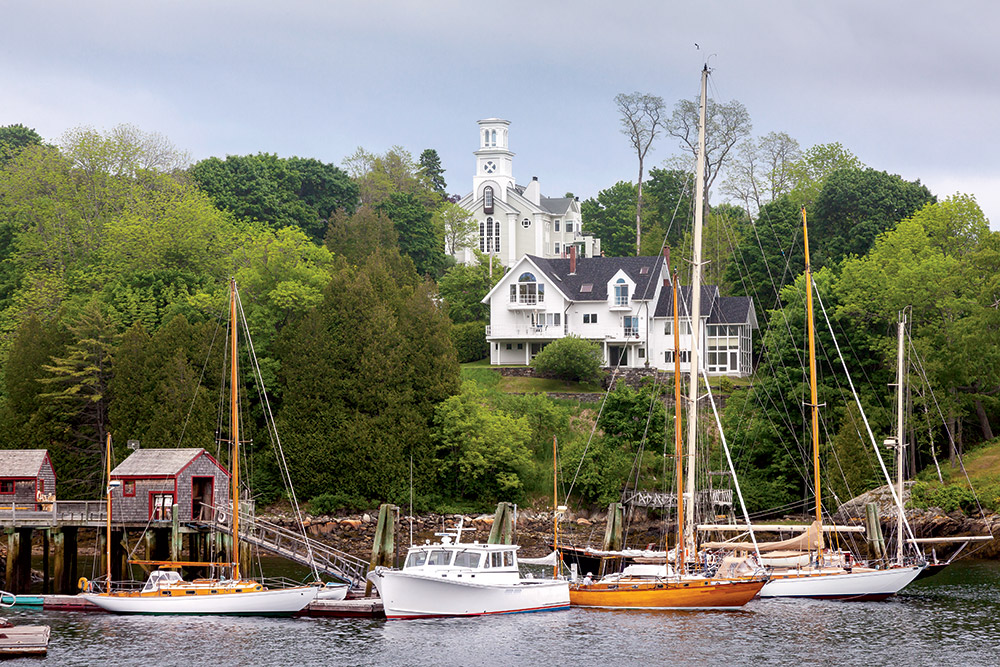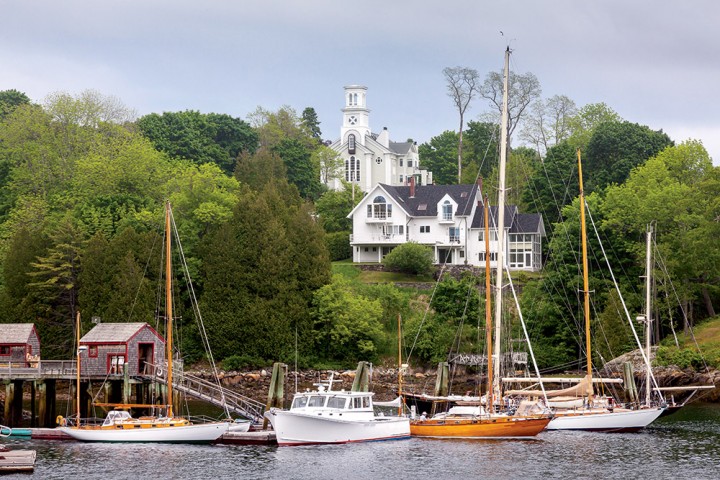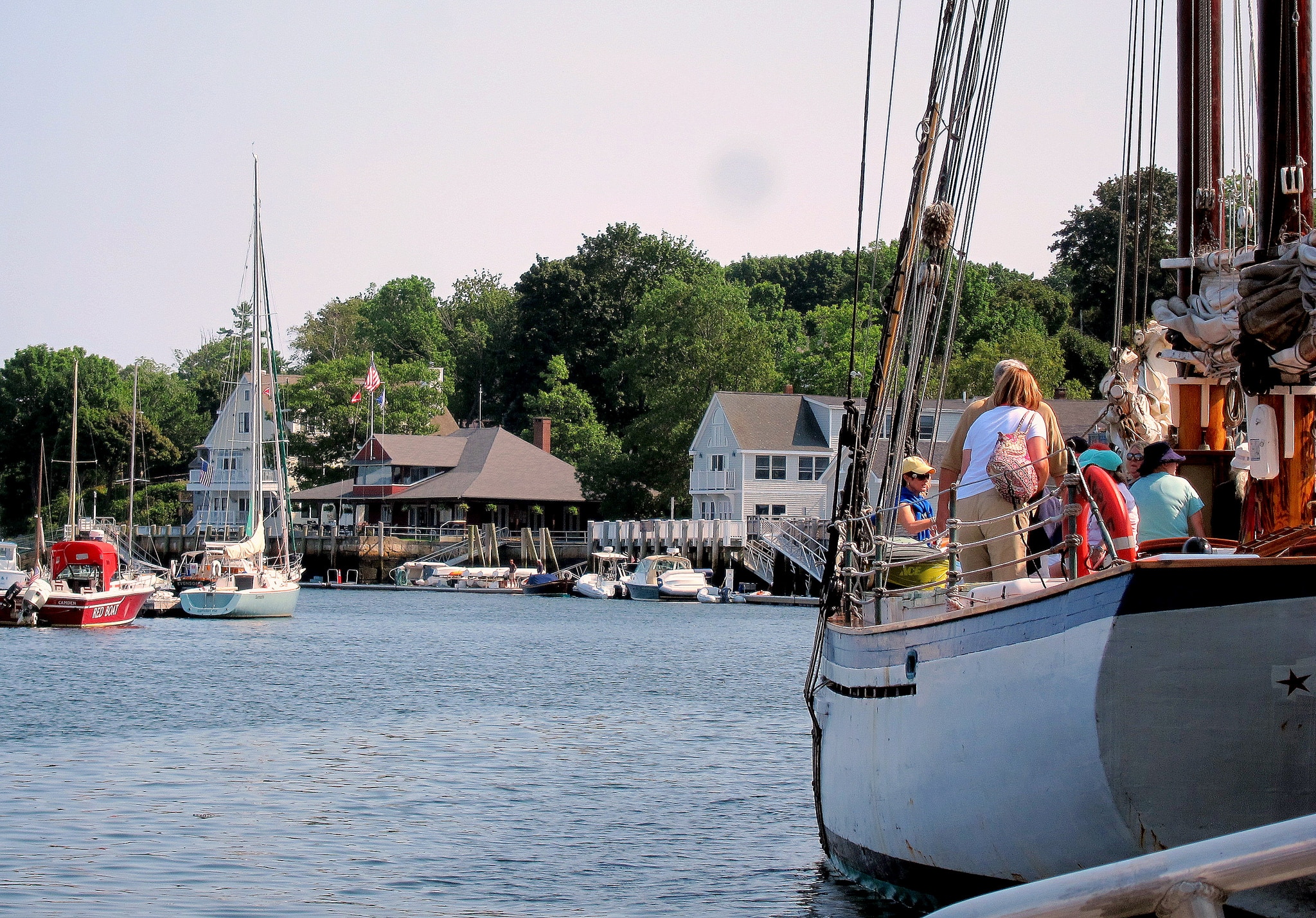Rockport & Camden | Two Miles of Coastal Beauty
The walk that binds together two of New England’s most beautiful villages — Rockport and Camden — is one of the prettiest in New England.

Coffee By Design | Portland, Maine
Photo Credit : Katherine Keenan
Photo Credit : Susan Cole Kelly
Maine has one of the world’s most dramatic coastlines, especially when the wind is high and towering waves thunder against the craggy shore. But it’s a quieter stretch of coast that offers—in many eyes—the prettiest walk in New England.
It’s not a long walk—about two miles or so—but it has great variety. The walk binds together two of New England’s most beautiful villages, Rockport and Camden. As one kind of loveliness slowly changes into another, the walk progresses the way a story does, from beginning to middle to end.
Russell Avenue begins a few steps from a statue of Rockport’s most famous citizen, a clever, beloved harbor seal named Andre, who was rescued as a pup by Harry Goodridge and tamed. Andre spent winters at the New England Aquarium, but each spring Andre was let loose in Boston Harbor and made a beeline up the coast to return to Harry in Rockport.

Photo Credit : Brenda Darroch
As Russell Avenue curves past village shops and homes, the ocean view gives way to more intimate sights—flower boxes and gardens behind white cottage fences. Gradually the avenue moves away from the village proper, and wildflowers take over where gardens cease—lupine in early summer, and later, daylilies and asters growing at will along the roadside.
On the ocean side, framed by maples and oaks, is Megunticook Golf Club, a venerable institution whose gorgeous seaside golf course was a linchpin in the area’s transformation into a summer destination in the early 20th century. But the more immediate drama happens over to the left of the road as the fields of Aldermere Farm and its herd of Belted Galloway cattle open up and extend for half a mile toward Camden.
The pasture of Aldermere Farm ends in the Lily Pond woods, where Rockport changes with no visible notice into Camden, and Russell Avenue becomes Chestnut Street. As it begins to descend into Camden, billowing, leafy chestnuts border it, interspersed with maple and beech and ash. Behind these trees is a parade of houses for which the word “pretty” is both perfect and inadequate. Some are shingle, some are brick, and many are clapboard. All are variations on a discernable set of clean, even austere, architectural principles that have made for a surprising depth of personal expression. The collective effect, as Chestnut Street sweeps down toward Camden, is a drama of such bright color that it seems designed to sustain all souls who live through Maine winters.

Photo Credit : Flickr/Jeff Rosen
Off to the right along Chestnut, streets drop almost precipitously down toward Bayview Street and Camden Harbor. The closer to town Chestnut draws, the shorter these streets get, until the harbor can be spotted. By this time, a round tower is in view high atop 780-foot Mount Battie, which protects the harbor from northwest winds and gives the land a distinctive shape that can be recognized far out at sea. There are places on Chestnut where you can look over and spot windjammers sailing out toward Curtis Island, each with a history longer than anyone on deck or on shore can remember.
Chestnut Street dead-ends at Elm Street next to Camden’s village green. Camden is a whole set of stories itself, with its shaded streets that span out to the north toward Belfast and to the west to Lake Megunticook. A few steps down past the busy shops of Elm Street, Commercial Street leads to the wharf. There, people just sit and gaze out to where boat sails disappear into Penobscot Bay, follow cloud shadows across the slopes of Mount Battie, and feed ducks at the waterfall where the Megunticook River flows into the harbor. If one or two of these idlers decide to head up Chestnut Street toward Rockport, they’ll find themselves once again on what seems, even in reverse, like the most beautiful walk in New England.
Have you ever strolled the path between Rockport and Camden, Maine?
This post was first published in 2016 and has been updated.








Very nice
I’d love to try this walk!
Beautiful description and sounds like a lovely walk – any chance you could add a graphic/map with more specific guidance for the route?
This looks and sounds fabulous!
Please show us a map of the walk from Rockport to Camden, it will be first on my bucket list
I use an electric wheelchair and would to do attempt some of the walk is it possible
We drove this in reverse as it was pouring with rain. We started at the beginning of Chestnut in the heart of Camden as this is an easy start point and you simply follow the road all the way and it becomes Russell st. We didn’t find the seal statue at the end probably because we were on the road. The description is accurate and you dont really need a map. Just follow Chestnut into Russell and you will have done it. There are some hills but the street had a side walk at least most of the way so you could probably could go in an electric wheelchair.
A map would be great! What is the mileage?
I would love to visit there! Small New England towns are my favorite places to visit!
Been to Maine 100s of time never made the walk
Hope to this summer Thanks